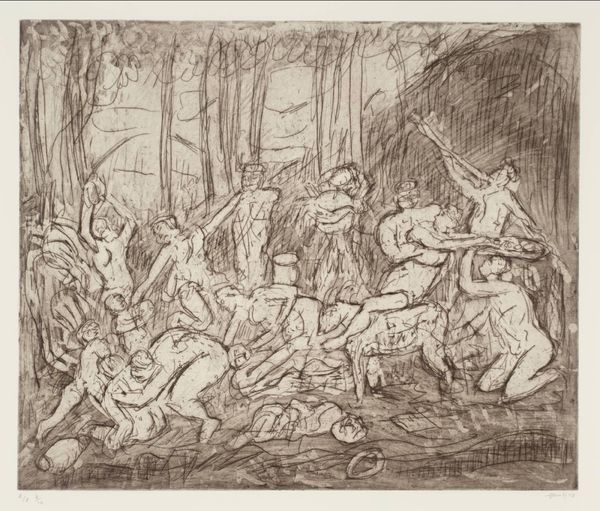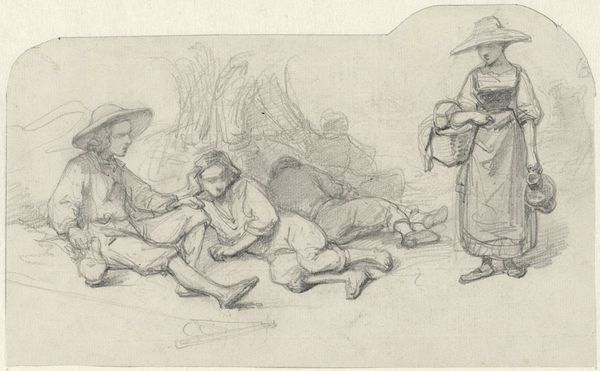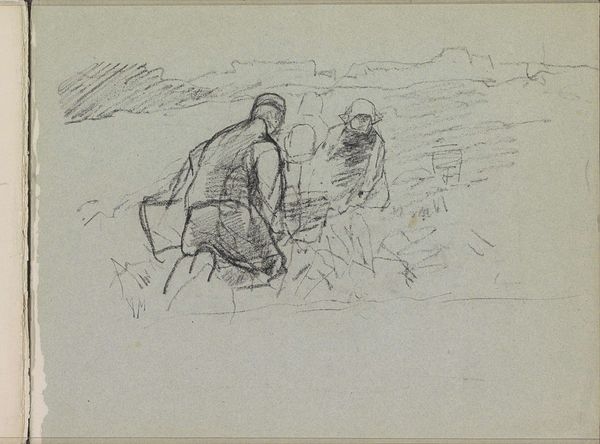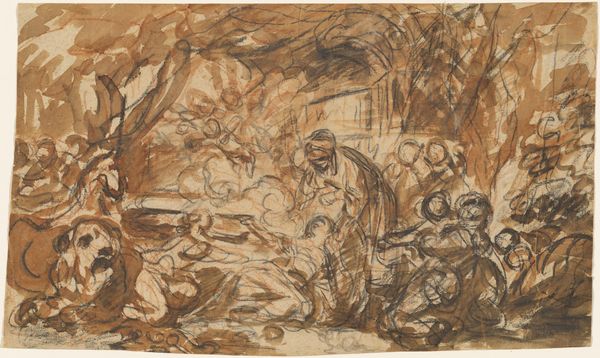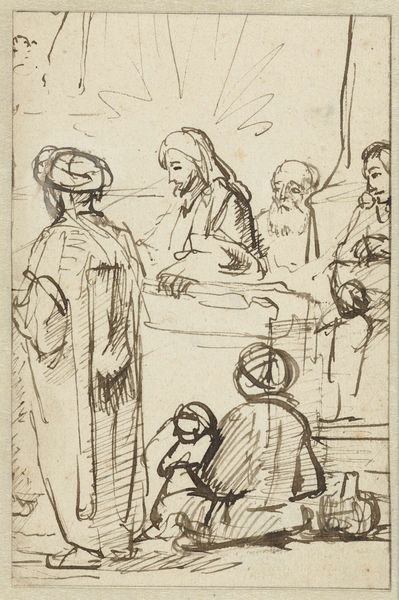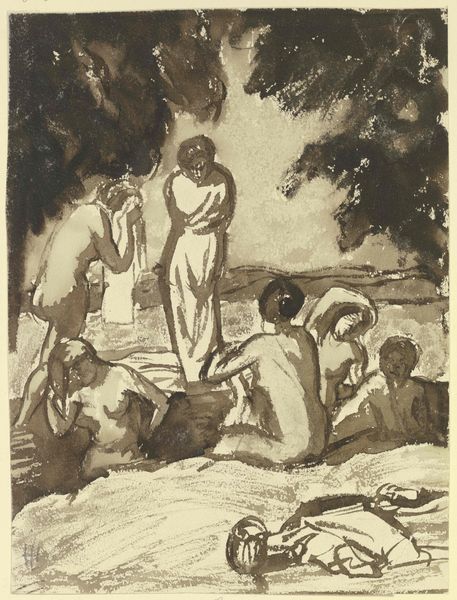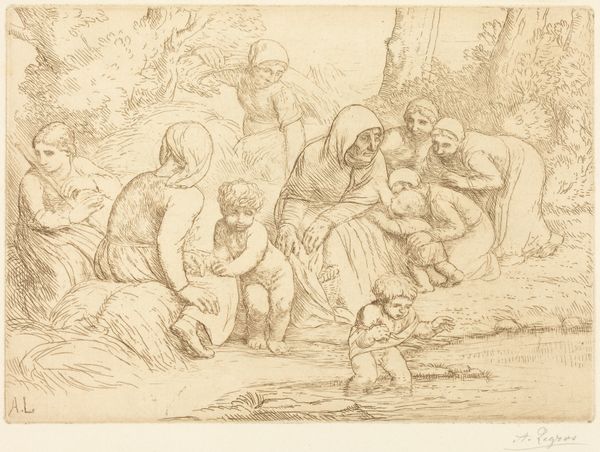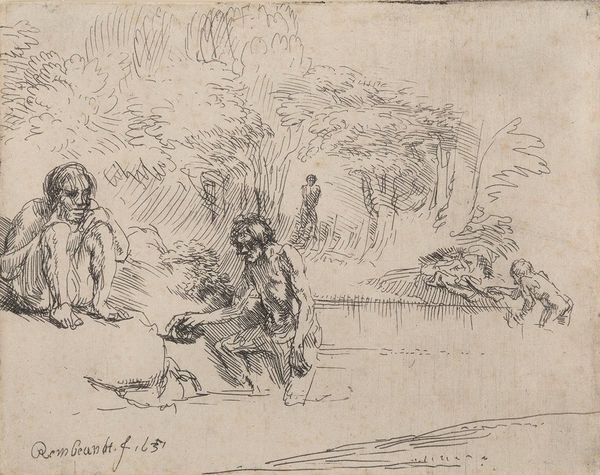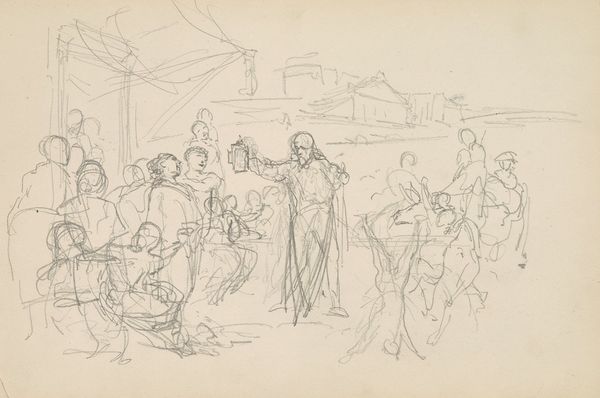
drawing, ink
#
drawing
#
ink drawing
#
pen sketch
#
sketch book
#
landscape
#
figuration
#
personal sketchbook
#
ink
#
sketchwork
#
ink drawing experimentation
#
pen-ink sketch
#
sketchbook drawing
#
storyboard and sketchbook work
#
sketchbook art
Copyright: Public Domain: Artvee
Editor: So, this is Pierre Puvis de Chavannes' "Etude de composition," dating from around 1886 to 1889. It’s an ink drawing, and it feels incredibly raw and immediate, almost like a fleeting thought captured on paper. What strikes you about its composition and form? Curator: Indeed. If we analyze the pictorial structure, one notices first the distribution of light and dark. Notice how the hatching defines volume, particularly in the group of figures. Are they integrated with the setting, or juxtaposed against it? Editor: I see what you mean. They almost seem separate. The landscape behind is rendered with such simple lines compared to the figures huddling together. Is there a specific term for this disjunction? Curator: We might consider the relationship between figure and ground, how the artist is using line and form to establish a visual hierarchy. Look at how the line varies in thickness and intensity. Is it merely representational, or does it evoke a certain psychological or emotional response through its inherent qualities? Editor: The varying line thickness does create a sense of depth. The figures are more defined and shaded, while the background almost fades away. So it’s not just about what's depicted but also *how* it's depicted. Curator: Precisely. The work itself exists as an interplay of visual elements, not merely a representation of the external world. The artist manipulates formal qualities – line, texture, space – to create meaning. What do you make of his emphasis on these figures clustered near a sort of decaying wooden structure? Editor: It does suggest an intended contrast. Focusing on the structural integrity, it seems the human element, represented with the lines of figures, interacts with, and maybe challenges, the structure of what appears man-made yet weathered. This perspective changes how I see art and interpret different pieces. Curator: Agreed. Paying close attention to formal qualities, instead of making art a representation, makes it an experience.
Comments
No comments
Be the first to comment and join the conversation on the ultimate creative platform.

